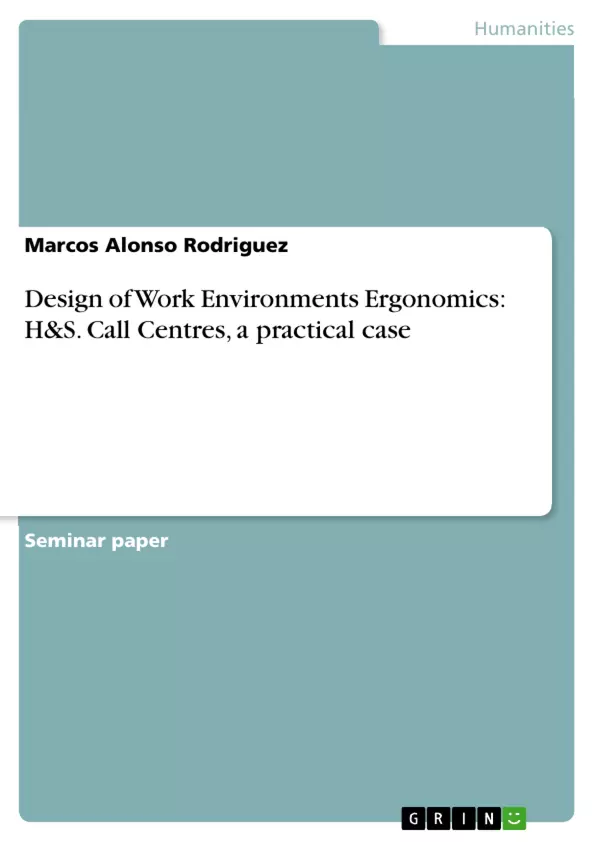Practical case submitted as term paper for the MSc in Work Psychology and Business
The UK Call Centre industry has grown by almost 250% since the mid-90s, and it is expected to continue growing (DTI, 2004). By 2007 this industry will employ almost 1 million people in approximately 6,000 call centres (DTI, 2004). The banking and finance services are the business sector that runs the most of the Call Centres in the UK employing more than one quarter of the total call-handlers.
This essay is structured as follows; firstly, definitions are given of what constitutes a Call Centre (CC) and what is a call-handler. Later, descriptions of the current working practices and general problems in the CC industry are explained, giving attention to Lloyds TSB CCs (LTSBCC) in particular. The second part of this essay begins with a description of the working practices in the Birmingham LTSBCC (BirmCC), giving special importance to the job design (variety, autonomy, and completeness) and the hygiene factors (Herzberg, 1966). Later a comparison between the BirmCC and other LTSBCCs are carried out in order to highlight the deficits of the BirmCC. Advice is also given regarding ergonomics issues. To conclude, recommendations and steps for their implementation are provided.
Inhaltsverzeichnis (Table of Contents)
- 1 An overview of the Call Centre industry
- Definitions
- Working practices
- Challenges at Lloyds TSB's Call Centres
Zielsetzung und Themenschwerpunkte (Objectives and Key Themes)
This essay analyzes the working practices and challenges facing the UK Call Centre industry, with a particular focus on Lloyds TSB's Call Centres. It investigates the impact of cost-minimization strategies on job design and employee well-being, exploring the tension between efficiency and customer orientation. The essay examines the different approaches to call center management, highlighting the impact of job design on employee morale and productivity.
- The challenges and opportunities of cost-minimization strategies in the call center industry
- The impact of job design on employee well-being and productivity
- The relationship between efficiency and customer orientation in call centers
- The implications of offshoring for call centers in the banking and financial services sector
- The role of ergonomics in improving working conditions and employee well-being in call centers
Zusammenfassung der Kapitel (Chapter Summaries)
The first chapter provides an overview of the UK call center industry, outlining its growth and the significant role it plays in the banking and finance sectors. It defines key terms, such as "call center" and "call-handler," and introduces the concept of "cost-minimization" strategies, which often lead to "mean and lean" approaches in call center management.
The second chapter delves into the working practices prevalent in the call center industry, highlighting the contrasting approaches of "mass service" and "high commitment service" models. It explores the impact of these models on job design, employee well-being, and productivity. It also discusses the challenges faced by call center managers, such as high turnover rates, employee well-being concerns, and the negative public perception of the industry.
The third chapter focuses on the specific challenges faced by Lloyds TSB's call centers, including the threat of offshoring and the need to reconcile geographical disparity and departmental differences. It highlights the impact of job insecurity on employee morale, productivity, and service quality.
Schlüsselwörter (Keywords)
This text explores the call center industry, focusing on job design, employee well-being, cost-minimization strategies, and the tension between efficiency and customer orientation. It examines the impact of different call center management models, offshoring practices, and employee turnover on the industry's performance and reputation. The text highlights the significance of ergonomics in improving working conditions and employee well-being.
- Citar trabajo
- Marcos Alonso Rodriguez (Autor), 2006, Design of Work Environments Ergonomics: H&S. Call Centres, a practical case, Múnich, GRIN Verlag, https://www.grin.com/document/277501



